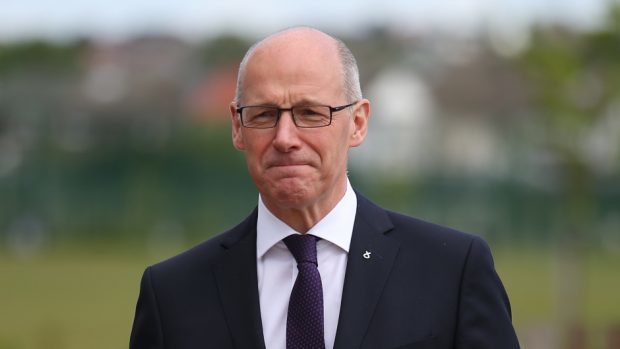The row about testing four and five year olds rumbles on. Education Secretary John Swinney has now announced an independent review into the controversial policy. The Scottish Parliament recently voted to scrap the assessments, as teachers’ unions raised concerns about the amount of time they take and parents claimed some children were left traumatised.
As always with such debates, it is the voice of the vocal middle classes who we hear loudest. They are well represented, and feel confident enough to engage with the media. The voices of the children living in neglect are not so loud.
If my adopted son had been tested in Primary 1, it would have helped to address learning problems which still hold him back six years later. At that point he had just been removed from a home where he had suffered severe neglect and had witnessed extreme violence. When we adopted him two years later we were told he was ‘doing well’ at school. All things are relative.
In comparison to other children who have suffered trauma he was doing well. At least he was stable enough to get through a school day. Pretty soon, though, it became apparent that he could barely read. Eventually, when he was at least eight, his teacher told us he was about 18 months behind his peers. It was the single most useful piece of information we received. Here was an accurate indication of the task ahead. At home we tried to help him catch up, although this was not his idea of fun!
It is common for children from disadvantaged backgrounds to be around 18 months behind their peers from better-off households. Tests in the first year of school would identify those children who are not being read bedtime stories, who do not have access to books at home, and whose parents have little interest in encouraging them to count. For many of them, school will be the only opportunity they have to build a better future.
The teaching unions would argue that their needs would be spotted without the requirement for testing, but the support needs of these children are easily lost in a system which is already under pressure, and which wouldn’t otherwise test them until they are seven or eight. Our son had a ‘Special Educational Need’ formally identified but this related to his emotional problems.
By the age of eight it was too late. He had developed a fear of reading. He is still reluctant to pick up a book or even the instruction manual of a new toy, and finds spelling difficult. Now, even in the notoriously misspelled world of social media and texting, his friends are noticing that he can’t spell five-letter words like ‘truck’ (to his acute embarrassment). So the extra work at home continues and, following a conversation with school, a test has been arranged to assess his spelling.
Test results are written in black and white. They are a record of academic achievement, both individually and across a generation. Progress can be tracked and measured. Children who are falling behind are identified and, if they don’t catch up, we can ask questions why. Not only should our children be tested, parents should be able to access the results. My son was tested just six months ago in P7 but the results were not shared with us or his new school, so another spelling assessment has to be arranged. If teachers’ unions are worried about the time tests take up, they might want to consider sharing the results with their colleagues!
I have another friend whose young son faces the opposite problem. He is clearly gifted at maths. Her walls are covered in complicated multiplications which he does for fun. His talent should be identified and nurtured. What discoveries might he make for Scotland in future years, and what technology might he help to develop? Yet she says his school seems to be treating him exactly the same as all the other children, with schoolwork that is way below his abilities. In a world where there are no tests to identify top performers, it is easy to ignore them because children with complicated needs (like mine) take up all the teachers’ time. Yet he deserves to be nurtured every much as my child.
So bring on the tests. We need to track the performance of children at the bottom and the top of the class in the vital first three years of primary school. Let parents know exactly how their child is doing so that they have the option to help at home. Give the parents of anxious children an opt-out clause, but don’t remove monitoring tools from an entire generation. Let headteachers , councils and inspectors monitor the performance of individual teachers and schools. And let us monitor the performance of each generation of children so that their education system, and the politicians in charge of it, can be held to account.
Eleanor Bradford is a former BBC Scotland health correspondent and now works for a communications agency

